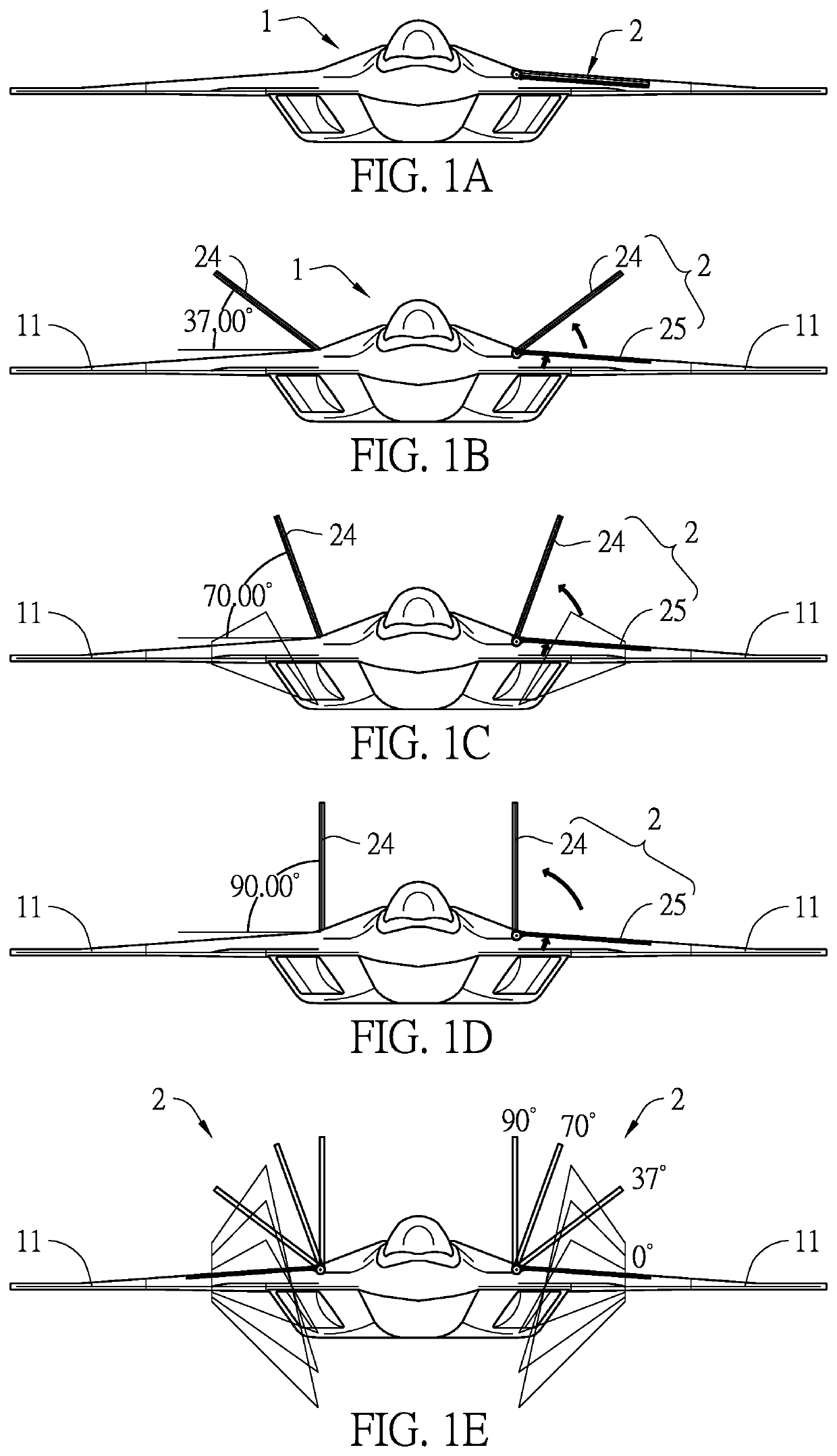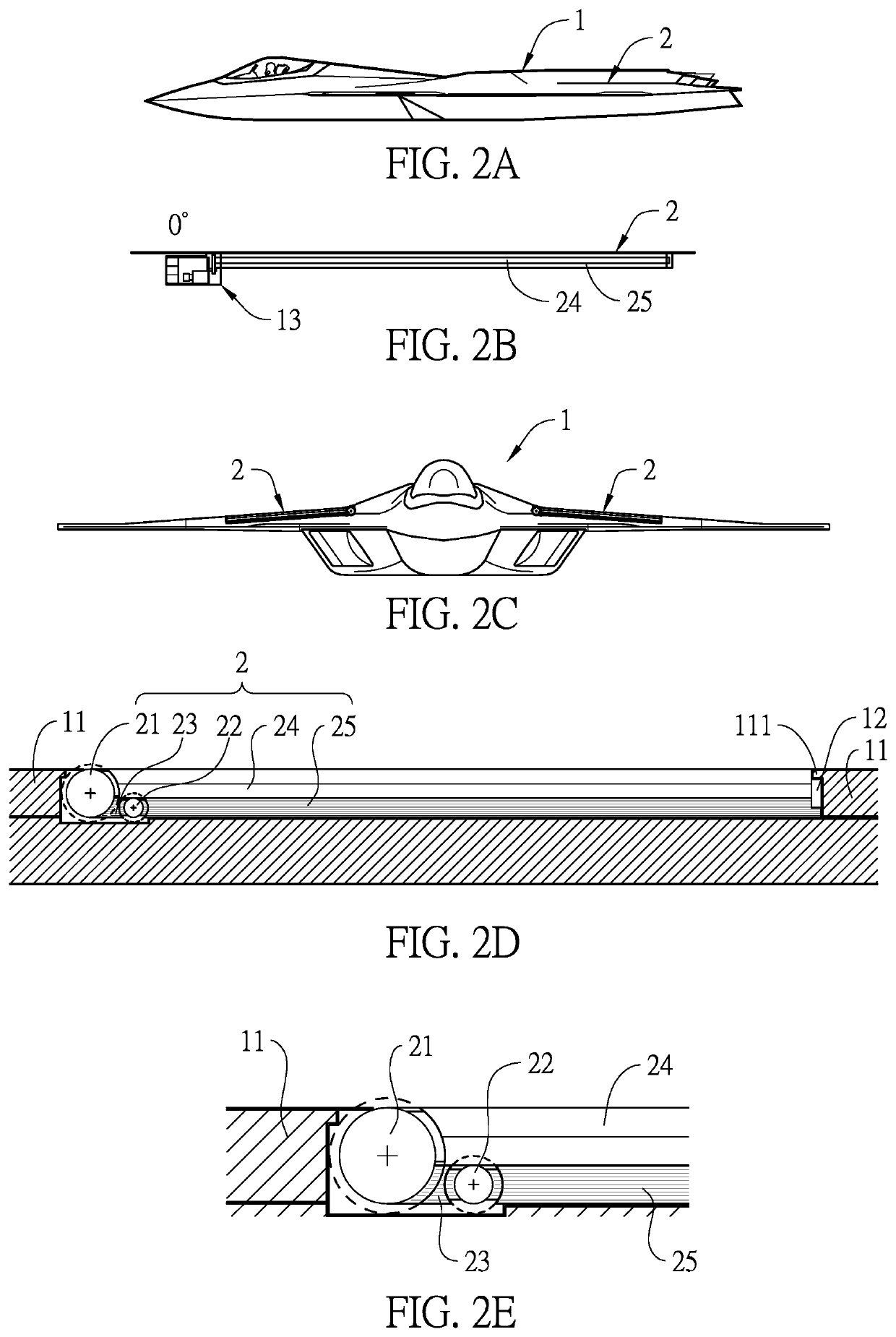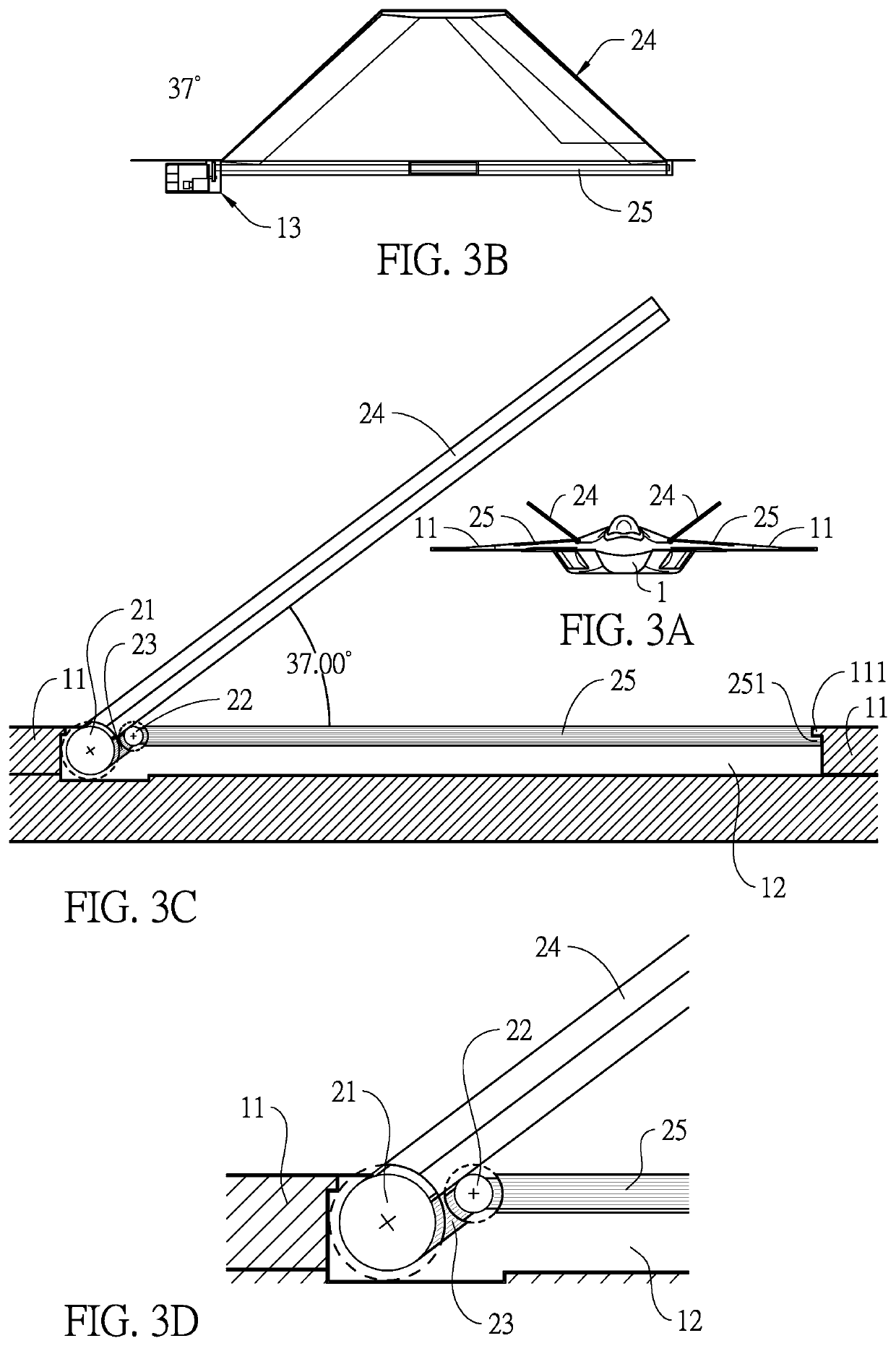Aircraft with stealth double wings
a technology of double wings and aircraft, applied in the direction of supersonic aircraft, aircraft, transportation and packaging, etc., can solve the problems of substantial incursion, difficulty in rapid and smooth change of attitude flight control, and unstable attitude flight control, so as to improve flight safety
- Summary
- Abstract
- Description
- Claims
- Application Information
AI Technical Summary
Benefits of technology
Problems solved by technology
Method used
Image
Examples
Embodiment Construction
[0063]Please refer to FIGS. 1A to 6B, which show one embodiment of an aircraft with stealth double wings according to the present invention. The aircraft comprises a main body 1 and stealth double wings 2.
[0064]The main body 1 has two sides that are respectively provided with a main wing 11 having a surface into which a space 12 is formed. A protruding part 111 is provided on an internal wall of the space 12 of the main wing 11.
[0065]The stealth double wings 2 are located respectively in the space 12 of each main wing 11 and include a first rotating shaft 21, a second rotating shaft 22, a link rod 23, a first wing 24, and a second wing 25. The link rod 23 has two ends respectively in connection with the first rotating shaft 21 and the second rotating shaft 22. The first rotating shaft 21 has another end in connection with the first wing 24, while the second rotating shaft 22 has another end in connection with the second wing 25. The first rotating shaft 21 and the second rotating sh...
PUM
 Login to View More
Login to View More Abstract
Description
Claims
Application Information
 Login to View More
Login to View More - R&D
- Intellectual Property
- Life Sciences
- Materials
- Tech Scout
- Unparalleled Data Quality
- Higher Quality Content
- 60% Fewer Hallucinations
Browse by: Latest US Patents, China's latest patents, Technical Efficacy Thesaurus, Application Domain, Technology Topic, Popular Technical Reports.
© 2025 PatSnap. All rights reserved.Legal|Privacy policy|Modern Slavery Act Transparency Statement|Sitemap|About US| Contact US: help@patsnap.com



